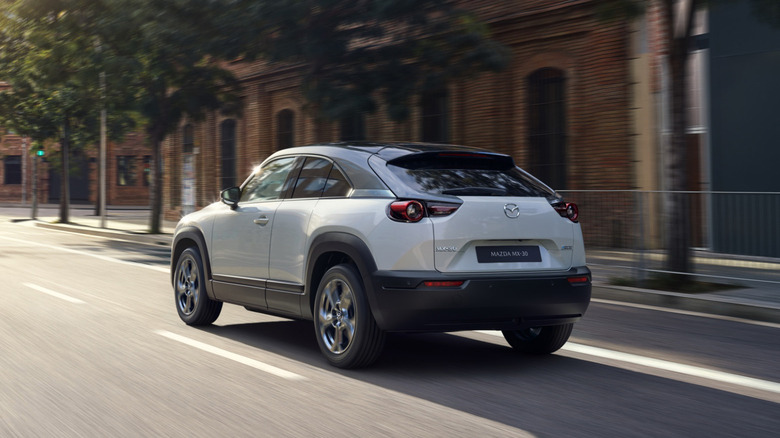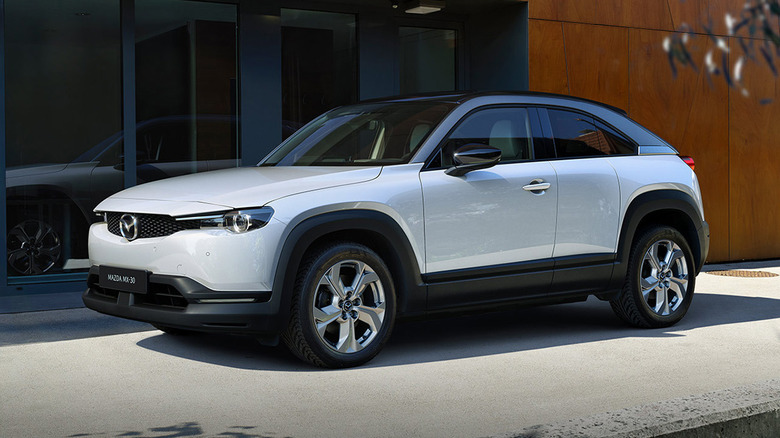Mazda Axes The MX-30 EV: Here's Why We're Not Sad About It
The Mazda MX-30 EV will soon depart the shores of this plane of existence after the current model year (at least in the United States), according to a press release from Mazda. The company said it will be shifting its priorities to plug-in hybrids for the time being. While discontinuing an EV sounds less than ideal, at least on the surface, it's not really the end of the world in this case. After all, as great as Mazdas can be, the MX-30 wasn't much of a winner.
First, the range was downright dismal for 2023. When other entry level EVs like the Chevy Bolt can attain upwards of 260 miles on a charge without an issue and a lot of Teslas, Kias, and Hyundais break the 300 mile mark, the 100 miles of estimated range from the Mazda seems like a typo at best and pitiful at worst, especially considering its $34,110 starting price. The "Premium Plus" trim starts at $37,120, just $3,120 less than a base Tesla Model 3, an EV that has an estimated 170 more miles of range.
Mazda misses the mark
Additionally, the MX-30 EV was only available on a limited basis in California, cementing the impression that this likely wasn't the most serious effort from Mazda. Limiting EVs to a certain state might be something that a new EV automaker would do to keep production goals in check, and many major automakers limited the geographical market when they first started offering EVs several years ago. In 2023, an age where you can walk into just about any other car dealership and drive away with an EV the same day, limiting the market to a single state seems shortsighted.
On a practicality note, the rear-hinged second row doors were cool on the Mazda RX-8, but end up being inconvenient on the MX-30 in parking lots. Overall, the MX-30 was a bit of a miss from a range and usability standpoint. And given the fact that Mazda only sold 16 MX-30s last month, the company has certainly seen the writing on the wall for some time now.

